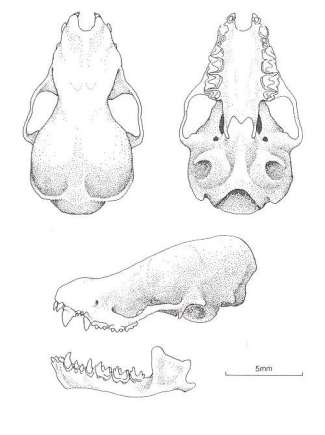Mating probably takes place in autumn before hibernation. Females usually have a single young, although there is a record of twins from South Dakota. In British Columbia, pregnant females have been observed from 21 June to 13 July and nursing females from 13 June to 3 August. This suggests that young are born from mid-June to mid-July. Newborn young weigh about one gram and have a forearm length of 12 millimetres.
|
In the Okanagan the Western Small-footed Myotis feeds primarily on caddisflies and also eats other flies, beetles and moths. It hunts over the edge of rocky bluffs and rarely over open water. There are two peaks in feeding activity: between 10:00 and 11:00 pm and between 1:00 and 2:00 am.
|
In summer the Western Small-footed Myotis roosts in cavities in cliffs, boulders, vertical banks, the ground and talus slopes, and under rocks. It prefers small, protected crevices where the environment is dry and hot (27-33°C). Nursery colonies are situated in similar sites (although in California a mixed colony of males and pregnant females was discovered under the wallpaper of an abandoned house). Small caves, abandoned mine adits and buildings serve as night roosts.
The Western Small-footed Myotis hibernates in winter. In Idaho and Montana, it has been found hibernating in caves and abandoned mines where it prefers temperatures of 1.5°-5.5°C. Recent observations indicate that a few individuals overwinter in British Columbia. In the Okanagan and Williams Lake regions, small numbers (1-3) have been found hibernating in caves and mine adits. Western Small-footed Myotis usually hibernate alone, wedging themselves into tight crevices or depressions in the ceiling of the hibernaculum with their undersides pressed against the ceiling and their heads facing outwards. This seems to provide the most stable environment for them.
|
|

